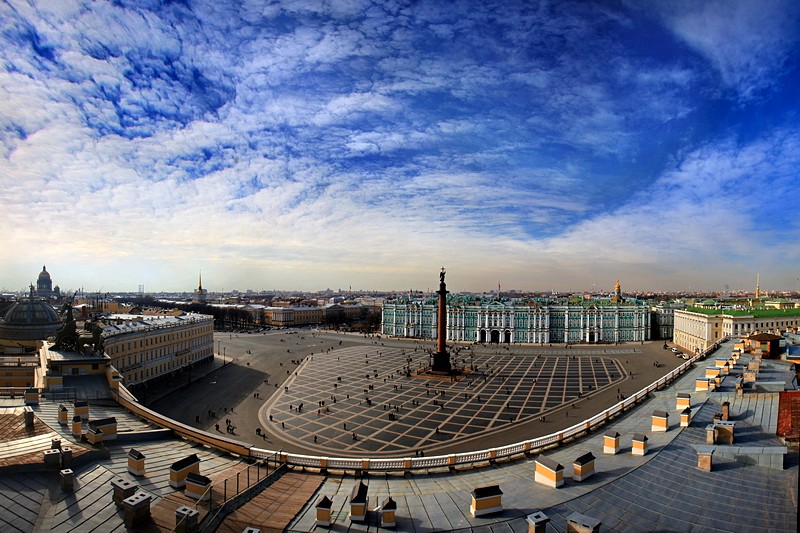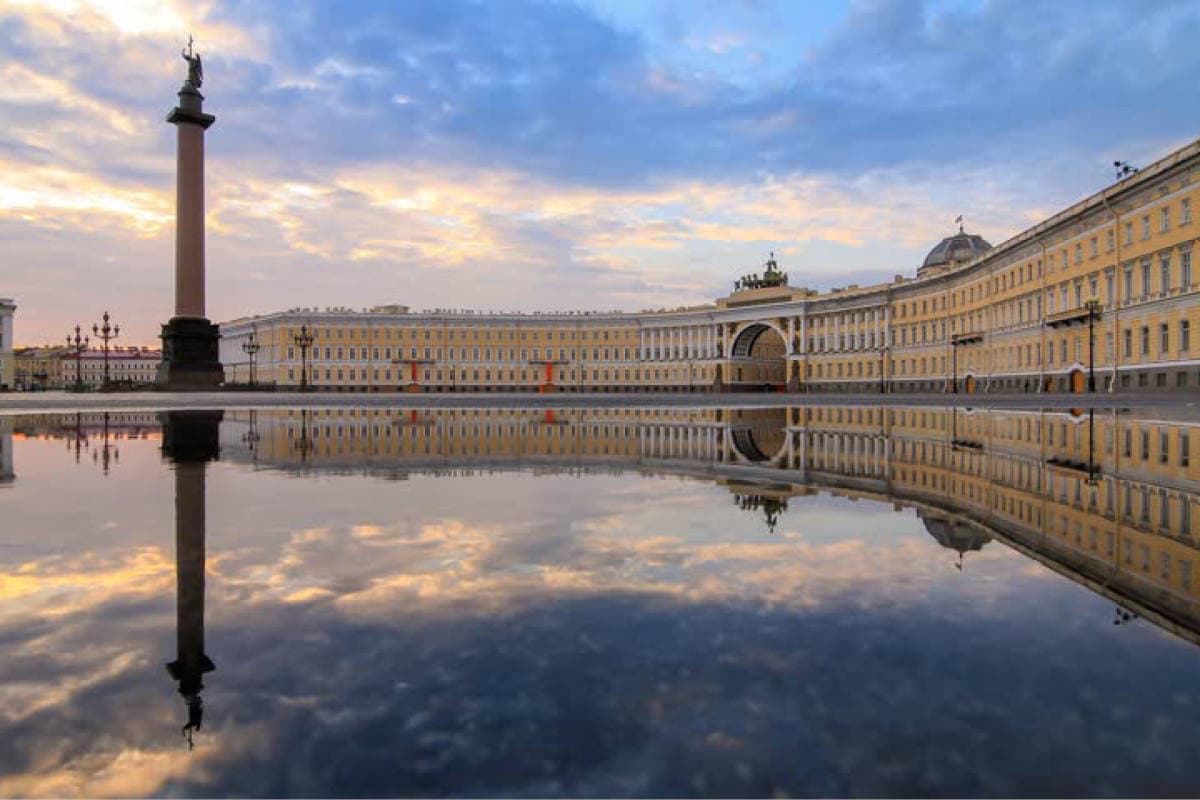What if a single location could encapsulate centuries of history, art, revolution, and architectural grandeur? Palace Square, the heart of St. Petersburg, Russia, is precisely that a space where the echoes of tsars, the whispers of artists, and the roar of revolutions still resonate.
Dvorv ploshchad, as it's known in its original Russian, [dvrtsovj plot], is far more than a mere open space. It's the central city square, the nexus where Nevsky Prospekt, the city's main thoroughfare, meets the Palace Bridge, offering access to Vasilievsky Island. Palace Square is the primary public space of St. Petersburg, a place dominated by the Winter Palace, the General Staff Building, and the towering Alexander Column. Within its boundaries, one can trace the rise and fall of empires, witness the evolution of artistic expression, and feel the weight of historical events that have shaped the modern world.
To fully appreciate the significance of Palace Square, one must delve into its architectural context. The Winter Palace, with its imposing facade, gave the square its name. The General Staff Building, an architectural masterpiece, borders the square, its eastern side now housing various government offices. Facing the Neva River, one encounters the Admiralty Building, an early construction of the city, adding another layer to the Square's legacy.
- Meet The Kids Of Screen Icon William Zabka Uncovering His Family Life
- Meet The Legendary Johnny Crawford A Teen Heartthrobs Journey
| Feature | Details |
|---|---|
| Location | St. Petersburg, Russia |
| Coordinates | 59.9397 N, 30.3150 E |
| Significance | Central city square; Main public space of St. Petersburg |
| Key Landmarks | Winter Palace, General Staff Building, Alexander Column, Admiralty Building |
| Historical Events | Site of the Bloody Sunday massacre (1905), October Revolution (1917) |
| Architectural Styles | Baroque (Winter Palace), Neoclassical (General Staff Building) |
| Functions | Public gatherings, concerts, festivals, parades |
Reference: Saint-Petersburg.com
The history of Palace Square is a captivating narrative of transformation. Throughout the centuries, it has borne witness to a spectrum of events, from the vibrant pomp of imperial parades to the harsh realities of revolution. The square, far from being a passive backdrop, actively participated in the unfolding drama of Russian history. The space has served as a gathering point for citizens and a stage for expressions of both unity and discontent.
The architectural splendor of the square is another significant element of its appeal. The Winter Palace, a resplendent example of Baroque architecture, immediately commands attention. Its facades, facing the Neva River, embody imperial power and artistic vision. The General Staff Building, designed in the Neoclassical style, further contributes to the visual harmony, its curved design a testament to its creator's architectural genius. The Alexander Column, a towering monument in the square's center, stands as a tribute to Russia's victory over Napoleon. These structures, together, create a stunning ensemble, which reflects the tastes and aspirations of various historical periods.
- The Youthful Days Of Pierce Brosnan A Journey Into His Early Career
- Jason Stathams Surprising Lookalike Meet His Doppelganger
The events that have taken place on Palace Square underscore its deep historical significance. On January 5, 1905, the square became the site of the Bloody Sunday massacre, an event that sparked the first Russian Revolution. The events of October 26, 1917, saw workers, soldiers, and sailors storm the Winter Palace, an act that marked the Bolsheviks' ascent to power. It's this combination of grandeur and tragedy, of architectural beauty and historical significance, that makes Palace Square such a potent symbol.
The square's location at an important crossroads emphasizes its importance. Nevsky Prospekt, one of the city's principal arteries, intersects with the Palace Bridge, which gives access to Vasilyevsky Island. This strategic positioning has made Palace Square a central hub for both transportation and social interactions.
For those visiting, the square offers a multitude of experiences. The Hermitage Museum, with its collection of over three million works of art, is located close by. The Admiralty building, a historical structure, adds to the site's charm, while the Admiralty Garden provides a tranquil setting. Concerts and public events are regularly held in Palace Square, making it a dynamic space, which appeals to people from all walks of life.
The name of the square is inextricably linked to the Winter Palace. The palace's southern facade looks out onto the square, providing a majestic focal point. This connection between architecture and location is a testament to how the square and the palace are intertwined, contributing to the city's identity and rich historical narrative.
Beyond St. Petersburg, the concept of "palace square" finds echoes in other places. Stuttgart, Germany, has its own Schlossplatz, a lively public space surrounded by historical structures, including the Neues Schloss (New Palace). Similarly, in the heart of Cleveland, Ohio, the Connor Palace stands as a historic theater, showcasing the variety and universality of the palace-square concept.
It's worth pointing out that the square underwent a period of renaming. Between 1918 and 1944, it was known as Uritsky Square, reflecting the revolutionary transformations that swept through the nation. The original name was ultimately restored, reminding people of the timeless nature of the space.
The beauty of Palace Square, and the significance it carries, is reflected in the words of those who describe it. It is considered to be St. Petersburg's primary square, a demonstration of how diverse architectural styles can work together harmoniously. It's a space where the past and present, the grand and the intimate, converge.
Consider the General Staff Building. The river facade stretched over an uninterrupted stretch of more than 650 feet, blending seamlessly with the surrounding environment. It overlooks the vast expanse of the river to the north and Palace Square to the south.
The square's narrative extends beyond its physical boundaries. The Hermitage Museum, located nearby, allows for a deeper understanding of the art and cultural landscape. It's an experience that reveals how Palace Square functions not only as a site of events, but also as a gateway to historical understanding and creative expression.
Palace Square is more than just a physical location; it's a symbol of a city, a nation, and an era. It stands as a reminder of the many dimensions of human experience, from artistic beauty to revolutionary fervor. Palace Square continues to be one of the most popular spots in St. Petersburg for a reason.



Detail Author:
- Name : Prof. Brennon Ledner Sr.
- Username : daija26
- Email : torp.ransom@weber.com
- Birthdate : 1991-05-14
- Address : 95371 Ellsworth Knoll Apt. 127 West Pamelaland, NE 81870-9809
- Phone : +1.248.223.3051
- Company : Lakin LLC
- Job : Respiratory Therapist
- Bio : Voluptatum quo quisquam non rerum in eum. Quam fugiat occaecati suscipit reprehenderit. Mollitia est consequuntur ipsum deleniti. Enim qui id provident et.
Socials
linkedin:
- url : https://linkedin.com/in/moshe_gleichner
- username : moshe_gleichner
- bio : Voluptatibus mollitia non officiis est.
- followers : 1309
- following : 2022
tiktok:
- url : https://tiktok.com/@moshegleichner
- username : moshegleichner
- bio : Error quia et ad cupiditate. Consectetur nemo nam facere perferendis.
- followers : 2224
- following : 309
instagram:
- url : https://instagram.com/gleichner1974
- username : gleichner1974
- bio : Molestiae animi blanditiis dolores recusandae maiores quidem iste. Est alias sint alias sunt et.
- followers : 4590
- following : 1064